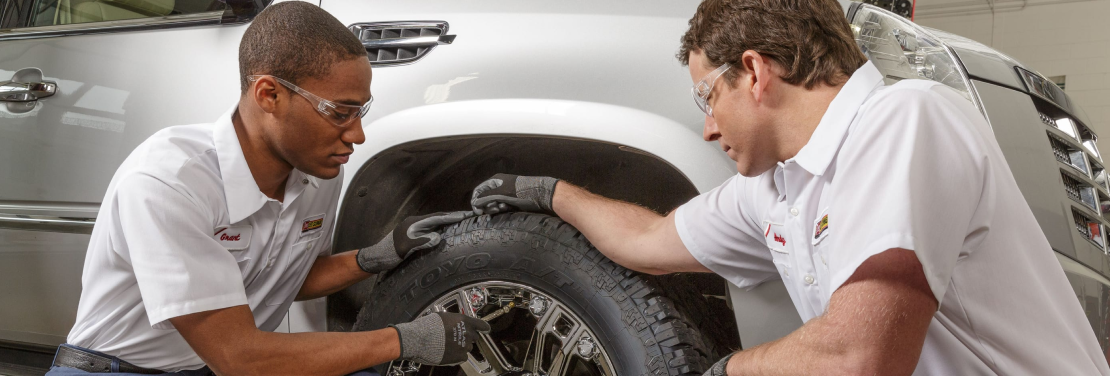Tire Service: Understanding Tire Stress Tracking Systems
Understanding Tire Pressure Surveillance Solutions (TPMS) is a critical facet of keeping optimal lorry efficiency and safety on the road. With developments in automobile modern technology, TPMS has actually come to be a standard attribute in modern-day automobiles, supplying real-time details on tire stress degrees.

Importance of TPMS
The value of Tire Stress Surveillance Solutions (TPMS) depends on their ability to enhance lorry safety and security and efficiency via real-time tracking of tire pressure levels. Keeping the right tire pressure is important for guaranteeing optimal handling, stopping, and general security of a vehicle. TPMS supplies chauffeurs with immediate comments on any type of underinflated or overinflated tires, permitting timely changes to be made.
Components of TPMS
Making up different essential components, a Tire Pressure Tracking System (TPMS) operates as a sophisticated security feature in modern lorries. The major components of a TPMS include sensors, a control component, and a caution indicator. Sensors are generally located in the tire shutoff stem or connected to the wheel assembly, where they gauge tire stress and transfer information to the control module. The control module processes this info and causes a caution if it discovers dramatically low pressure in any of the tires. The caution sign, often a symbol on the dashboard, alerts the driver to examine the afflicted tire or tires. Some advanced TPMS models also display the actual tire stress analyses for each and every tire, providing chauffeurs with real-time info to make sure optimal tire performance and safety. By checking tire pressure continuously, TPMS assists avoid accidents, reduces tire wear, and boosts gas efficiency, making it a crucial part for lorry security and performance.
Types of TPMS

On the various other hand, indirect TPMS counts on the vehicle's wheel speed sensing units to keep track of tire stress. This system detects underinflation by comparing the rotational speeds of the wheels. Indirect TPMS is less expensive than straight TPMS, as it utilizes existing sensors within the car.
While direct TPMS provides a lot more accurate analyses, indirect TPMS is simpler in design and commonly requires less maintenance. Both systems have their constraints and benefits, and the choice between them usually relies on factors such as cost, vehicle make, and individual choice. Understanding the distinctions in between these 2 sorts of TPMS can assist automobile owners make informed decisions concerning tire maintenance and security.
TPMS Upkeep Tips
Efficient maintenance of TPMS is necessary for making sure ideal performance and safety and security of your automobile. Regularly inspecting the TPMS sensing units for any kind of damages or deterioration is crucial. Make certain that the sensing units are cost-free and tidy from particles that can hinder their performance. Additionally, it is suggested to inspect the sensor batteries occasionally and replace them as needed to assure accurate analyses. Conduct routine checks on the tire pressure degrees and compare them with the TPMS readings to guarantee they correspond. If there are any kind of inconsistencies, rectify the system adhering to the supplier's standards. Throughout tire rotation or substitute, make sure that look at this website the TPMS elements are handled very carefully to protect against any kind of prospective damages. If the TPMS alerting light brightens on the control panel, resolve the issue promptly by inspecting the tire stress and the overall system for any mistakes. By sticking to these maintenance ideas, you can extend the life-span of your TPMS and enhance the security of your driving experience.
Advantages of Proper Tire Pressure
Preserving proper tire pressure, as emphasized in TPMS Maintenance Tips, is essential for reaping the many benefits linked with ideal tire pressure degrees. Additionally, correct tire pressure guarantees also tire wear, extending the life expectancy of the tires and advertising much safer driving problems. In final thought, the advantages of appropriate tire stress go past simply tire longevity; they include improved fuel efficiency, enhanced safety and security, much better vehicle efficiency, and overall driving comfort.
Conclusion
Finally, comprehending tire stress monitoring systems (TPMS) is critical for keeping ideal tire pressure and making sure vehicle security. By acknowledging the value of TPMS, recognizing with its components, knowing the different types available, sticking to proper maintenance pointers, and realizing the advantages of keeping proper you can look here tire pressure, drivers can boost their driving experience and lengthen the life expectancy of their tires. Proper tire pressure is essential to effective and secure vehicle procedure.
